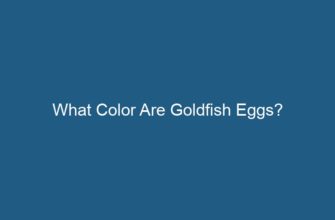Algae are a prominent part of aquatic ecosystems, and they play a vital role in maintaining the balance of these ecosystems. While algae can sometimes become problematic, leading to overgrowth and imbalances, there are several fish species that actively consume algae and help control its growth. In this article, we will explore various fish species that eat algae, their feeding habits, and their importance in maintaining a healthy aquatic environment.
- 1. Siamese Algae Eater (Crossocheilus oblongus)
- 2. Bristlenose Pleco (Ancistrus sp.)
- 3. Otocinclus Catfish (Otocinclus sp.)
- 4. Chinese Algae Eater (Gyrinocheilus aymonieri)
- 5. Molly Fish (Poecilia spp.)
- 6. Grass Carp (Ctenopharyngodon idella)
- 7. Goldfish (Carassius auratus)
- 8. Guppies (Poecilia reticulata)
- 9. Plecostomus (Hypostomus plecostomus)
- 10. Silver Dollar Fish (Metynnis spp.)
- 11. Amano Shrimp (Caridina multidentata)
- Frequently Asked Questions (FAQs)
- 1. Are there any risks associated with relying solely on fish for algae control in an aquarium?
- 2. Can algae-eating fish survive without any algae in the aquarium?
- 3. Can algae-eating fish completely eliminate algae from an aquarium?
- 4. Can algae-eating fish be kept together in the same aquarium?
- 5. Can algae-eating fish be kept in outdoor ponds?
- 6. Can algae-eating fish be used in natural water bodies to control algae?
- Conclusion
1. Siamese Algae Eater (Crossocheilus oblongus)
The Siamese Algae Eater, also known as the SAE, is a popular fish species among aquarium enthusiasts due to its efficient algae-eating abilities. These fish have a slender body and are typically silver or gray with black horizontal stripes.
SAEs are primarily herbivorous and have a voracious appetite for algae. They feed on various types of algae, including green spot algae, hair algae, and even some forms of black beard algae. Their ability to consume algae makes them excellent natural cleaners for aquariums, as they help prevent algae overgrowth.
It is important to note that SAEs require a well-maintained aquarium with sufficient algae growth to sustain them. Providing additional sources of plant-based foods, such as blanched vegetables or algae wafers, is also recommended to ensure their nutritional needs are met.
2. Bristlenose Pleco (Ancistrus sp.)
The Bristlenose Pleco, belonging to the Ancistrus genus, is another popular algae-eating fish species commonly kept in aquariums. These fish are known for their distinct appearance, with males possessing bristle-like tentacles on their snouts.
Bristlenose Plecos are primarily herbivorous, with a diet that consists mainly of algae and other plant matter. They are particularly efficient at consuming various types of algae, including green algae and diatoms. These fish are also known to scrape algae off aquarium surfaces using their specialized mouthparts.
While Bristlenose Plecos primarily feed on algae, it is important to supplement their diet with additional plant-based foods to ensure their overall health and nutritional requirements are met. Providing driftwood in the aquarium is also beneficial, as it aids in their digestion and serves as a source of dietary fiber.
3. Otocinclus Catfish (Otocinclus sp.)
Otocinclus Catfish, commonly referred to as Otos, are small algae-eating fish that are highly sought after for their ability to control algae growth in aquariums. These fish have a compact body shape and are typically adorned with a pattern of dark spots.
Otos are primarily herbivorous and have a particular affinity for consuming soft-bodied algae, such as green spot algae and diatoms. They are known for their constant grazing behavior, diligently scouring aquarium surfaces and plant leaves for algae to feed on.
While Otos primarily rely on algae as their main food source, it is important to supplement their diet with additional plant-based foods, such as blanched vegetables or specialized algae wafers. Providing a well-established aquarium with ample algae growth is essential for their long-term care.
4. Chinese Algae Eater (Gyrinocheilus aymonieri)
The Chinese Algae Eater is a unique fish species that is highly efficient at consuming algae. Despite its name, this fish is not native to China but rather originates from Southeast Asia. It has a streamlined body and is typically silver or gold in color, with dark markings.
Chinese Algae Eaters are primarily herbivorous, with a diet that mainly consists of algae. They have a particular affinity for consuming green spot algae, filamentous algae, and even some forms of black beard algae. However, it is important to note that these fish can become more aggressive as they grow older and may also consume the slime coat of other fish.
Due to their potential aggression and specialized dietary needs, the Chinese Algae Eater requires careful consideration before adding them to an aquarium. Providing ample space, hiding spots, and a well-maintained aquarium with sufficient algae growth is crucial for their overall well-being.
5. Molly Fish (Poecilia spp.)
Molly Fish, belonging to the Poecilia genus, are often overlooked when it comes to their algae-eating capabilities. While these fish are primarily omnivorous, their diet can be supplemented with various types of algae.
Mollies have a diverse diet and can consume different types of algae, including green spot algae and hair algae. They are also known for their constant grazing behavior, actively foraging for algae on aquarium surfaces and decorations.
While mollies can contribute to algae control in aquariums, it is important to note that they should not be solely relied upon for this purpose. Supplementing their diet with a balanced commercial fish food and providing a well-maintained aquarium with proper filtration is essential for their overall health and well-being.
6. Grass Carp (Ctenopharyngodon idella)
The Grass Carp, also known as the White Amur, is a large herbivorous fish species that is widely recognized for its ability to control aquatic plant growth, including certain types of algae. These fish have a streamlined body and are typically silver or gray in color.
Grass Carp have a voracious appetite for aquatic plants, including filamentous algae and submerged plants. They are often used in natural and man-made water bodies to control excessive plant growth, including algae blooms.
It is important to note that Grass Carp can grow quite large, reaching lengths of up to four feet. They require a substantial amount of space and are more suitable for large outdoor ponds or lakes rather than home aquariums.
7. Goldfish (Carassius auratus)
Goldfish, one of the most popular fish species worldwide, are often associated with their vibrant colors and unique shapes. While goldfish are primarily omnivorous, they can contribute to algae control in aquariums.
Goldfish have a diverse diet and can consume various types of algae, including filamentous algae and green spot algae. They are also known for their constant grazing behavior, actively foraging for algae on aquarium surfaces and decorations.
While goldfish can help control algae growth, it is important to note that they have specific care requirements and should not be solely relied upon for algae control. Providing a well-maintained aquarium with proper filtration, regular water changes, and a balanced commercial fish food is essential for their overall health and longevity.
8. Guppies (Poecilia reticulata)
Guppies, another popular fish species among aquarium enthusiasts, are often overlooked when it comes to their algae-eating capabilities. While guppies are primarily omnivorous, their diet can be supplemented with various types of algae.
Guppies have a diverse diet and can consume different types of algae, including green spot algae and hair algae. They are also known for their constant grazing behavior, actively foraging for algae on aquarium surfaces and plant leaves.
While guppies can contribute to algae control in aquariums, it is important to note that they should not be solely relied upon for this purpose. Supplementing their diet with a balanced commercial fish food and providing a well-maintained aquarium with proper filtration is essential for their overall health and well-being.
9. Plecostomus (Hypostomus plecostomus)
Plecostomus, often referred to as Plecos, are a diverse group of fish species that are known for their algae-eating capabilities. These fish have a unique appearance, with their armored bodies and sucker-like mouths.
Plecos are primarily herbivorous and have a particular affinity for consuming various types of algae, including green spot algae and diatoms. They are also known to scrape algae off aquarium surfaces using their specialized mouthparts.
While Plecos primarily rely on algae as their main food source, it is important to supplement their diet with additional plant-based foods, such as blanched vegetables or specialized algae wafers. Providing a well-maintained aquarium with ample hiding spots and proper filtration is essential for their overall well-being.
10. Silver Dollar Fish (Metynnis spp.)
Silver Dollar Fish, belonging to the Metynnis genus, are often chosen for their unique shape and silver coloration. While these fish are primarily herbivorous, their diet can be supplemented with various types of algae.
Silver Dollar Fish have a diverse diet and can consume different types of algae, including green spot algae and hair algae. They are also known for their constant grazing behavior, actively foraging for algae on aquarium surfaces and plant leaves.
While Silver Dollar Fish can contribute to algae control in aquariums, it is important to note that they should not be solely relied upon for this purpose. Supplementing their diet with a balanced commercial fish food and providing a well-maintained aquarium with proper filtration is essential for their overall health and well-being.
11. Amano Shrimp (Caridina multidentata)
Amano Shrimp, also known as Algae Shrimp or Yamato Shrimp, are small invertebrates that are highly effective at consuming various types of algae. These shrimp have a transparent body and are often sought after for their algae-eating capabilities.
Amano Shrimp are primarily herbivorous and have a particular affinity for consuming soft-bodied algae, such as green spot algae and diatoms. They are known for their constant grazing behavior, diligently scouring aquarium surfaces and plant leaves for algae to feed on.
While Amano Shrimp primarily rely on algae as their main food source, it is important to supplement their diet with additional plant-based foods, such as blanched vegetables or specialized algae wafers. Providing a well-established aquarium with ample algae growth is essential for their long-term care.
Frequently Asked Questions (FAQs)
1. Are there any risks associated with relying solely on fish for algae control in an aquarium?
While fish can contribute to algae control, it is important not to solely rely on them for this purpose. Factors such as overstocking, inadequate filtration, and poor water quality can contribute to algae overgrowth. It is crucial to maintain a well-balanced aquarium environment and consider other measures, such as regular water changes and proper filtration, to control algae effectively.
2. Can algae-eating fish survive without any algae in the aquarium?
Algae-eating fish, such as Siamese Algae Eaters and Bristlenose Plecos, can survive without algae in the aquarium. However, it is essential to provide them with alternative food sources, such as blanched vegetables or specialized algae wafers, to ensure their nutritional needs are met. Additionally, providing ample hiding spots and a well-maintained aquarium environment is crucial for their overall well-being.
3. Can algae-eating fish completely eliminate algae from an aquarium?
While algae-eating fish can help control algae growth, it is unlikely that they will completely eliminate algae from an aquarium. The presence of algae is natural in aquatic ecosystems, and maintaining a balanced environment is key. Regular maintenance practices, such as cleaning aquarium surfaces and maintaining proper water parameters, will help control algae growth alongside the efforts of algae-eating fish.
4. Can algae-eating fish be kept together in the same aquarium?
In general, algae-eating fish can be kept together in the same aquarium, as long as there is sufficient space and resources for each species. However, it is important to research the specific needs and compatibility of each species before adding them to the same tank. Some fish, such as the Chinese Algae Eater, can become aggressive as they mature and may not be suitable for peaceful community setups.
5. Can algae-eating fish be kept in outdoor ponds?
Some algae-eating fish, such as Grass Carp and Plecos, can be kept in outdoor ponds to help control excessive plant growth, including algae blooms. However, it is important to ensure that the pond is properly maintained, has adequate filtration, and provides appropriate environmental conditions for the specific fish species. Additionally, local regulations and restrictions should be considered before introducing non-native fish species into natural bodies of water.
6. Can algae-eating fish be used in natural water bodies to control algae?
While some algae-eating fish, such as Grass Carp, are commonly used in natural and man-made water bodies to control excessive plant growth, including algae blooms, it is essential to consider the environmental impact and potential risks associated with their introduction. Invasive species can disrupt native ecosystems, and local regulations and guidelines should be followed to ensure responsible management practices.
Conclusion
Algae-eating fish play a vital role in maintaining the balance of aquatic ecosystems by helping control algae growth. Fish species such as Siamese Algae Eaters, Bristlenose Plecos, Otocinclus Catfish, and others are highly efficient at consuming various types of algae, contributing to the overall health and aesthetic appeal of aquariums. However, it is important to provide a well-maintained environment, proper nutrition, and consider other measures to effectively control algae growth. Responsible fishkeeping practices and thorough research are crucial in creating a harmonious and balanced aquatic ecosystem.










